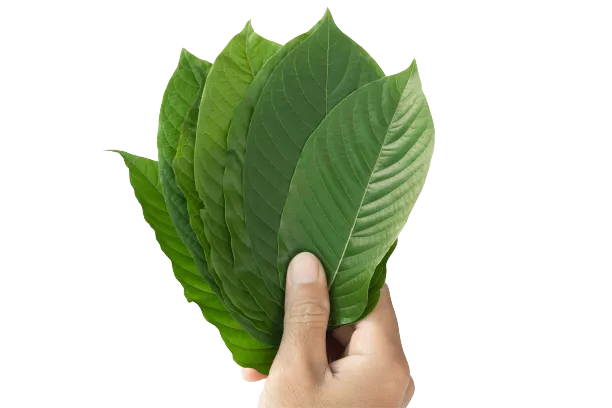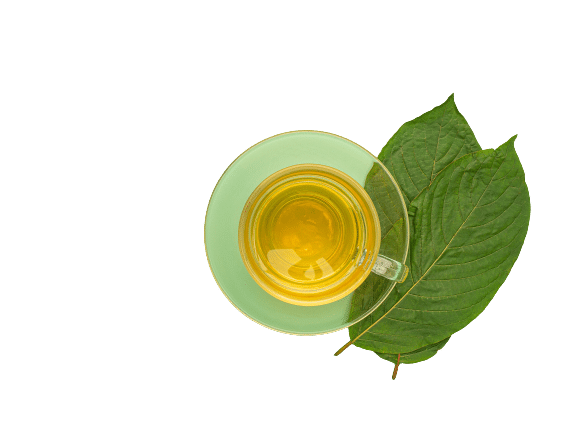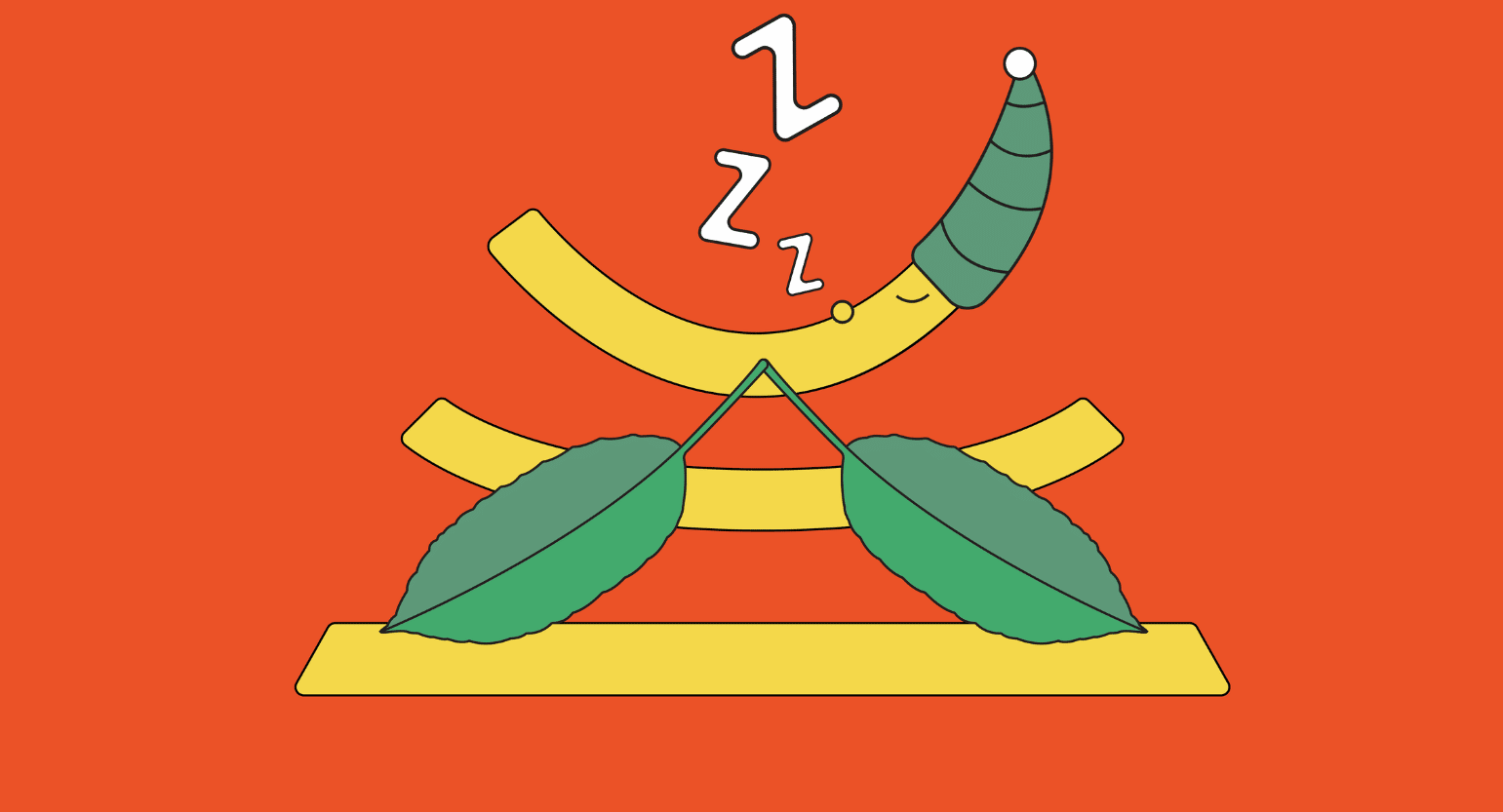What Is Kratom?
Kratom is a natural herb that is harvested from the Mitragyna speciosa tree, which grows primarily in Indonesia. Kratom has been used in traditional medicine for hundreds of years.
It’s usually consumed as ground-up leaves from the tree, and the alkaloids within the leaves offer a variety of effects. It’s a unique drug in that the effects are heavily dose-dependent. Smaller doses — including microdoses — tend to produce stimulative and nootropic effects. Larger quantities provide pain relief, relaxation, and sedation for most users.
What Is Microdosing?
Microdosing is a concept that is applied across almost every psychoactive drug available, and it involves taking very small doses — called microdoses — of a substance. In all cases, a microdose is a smaller volume than is required to experience the full psychoactive effects. The dose is often under the “threshold dose,” which is the standard amount an individual has to consume to notice a distinct change in perception.
The idea of microdosing can be applied to nearly every psychoactive compound, including marijuana and kratom, as well as psychedelic drugs like LSD and psilocybin mushrooms.
What Is Considered a Microdose of Kratom?
A typical microdose for kratom is between 0.1 gram and 0.5 grams, depending on several factors, including body weight, experience, and metabolism.
For comparison, a standard kratom dose for stimulation and nootropic effects is between 1 and 3 grams, while larger amounts between 5 and 8 grams provide more sedative effects and mild to intense pain relief.
What Are the Benefits of Microdosing Kratom?
Many kratom users find the effects of kratom helpful in their daily lives, especially when improving performance at work or in school. Small doses of kratom — 1 to 3 grams — provide intense stimulation for most users, similar to drinking several cups of coffee. While some users report that kratom doesn’t cause the same jitteriness or overwhelming feeling of a racing mind that coffee does, others find that the standard dose of kratom is too intense for them.
Additionally, kratom does come with some side effects. It can be habit-forming and addictive, mainly if you use it every day, fail to take breaks every month or so, or take large doses regularly.
Other unwanted side effects include dizziness, dehydration, a cloudy mind, upset stomach, diarrhea, drowsiness, chronic fatigue, and dry mouth.
Microdosing kratom aims to reduce the risk of all of these side effects, and for many users, the process makes the experience much more manageable and enjoyable. Most people note that microdoses of kratom aren’t overwhelming and provide a steady sense of stimulation, improved focus, and increased concentration.
Additionally, smaller doses of kratom are less likely to leave you with side effects, and they’re typically less addicting than more significant quantities. Some users have found no side effects at all when microdosing kratom.
What Effects Does Microdosing Kratom Have?
So, why microdose kratom? The potential benefits of taking kratom, especially in tiny doses, are manifold.
Most importantly for the majority of users, microdosing kratom can provide stimulation equivalent to coffee but with a lower risk of anxiety, stress, and a racing mind. The energy supplied by kratom microdosing is usually described as more balanced and smooth and without the crash.
Other benefits most users report include boosted concentration and focus. Countless user reports state that kratom has powerful nootropic effects, providing increased mental acuity and a clear, focused mind. Combined with their stimulative effects, small doses of kratom can improve performance at work or school, making microdosing a popular choice for business professionals and students looking to gain an edge over the competition.
Additionally, anecdotal evidence suggests that microdoses of kratom can provide relief from anxiety, as opposed to causing it, like strong coffee might. Combining reduced anxiety with stimulation and nootropic benefits further supports the effectiveness of microdosing kratom.

How to Microdose Kratom
If the benefits mentioned above are appealing to you, or if you already use kratom but find the effects overwhelming at times, you might be wondering how to get started with microdosing kratom. Below, you’ll find guidelines for microdosing for beginners and experienced users alike, including dosing guidelines, strain selection, and how to take the kratom you choose.
1. Starting Dose
Microdosing is all about finding the minimal dose that supplies the desired effects without being overwhelming or leading to adverse side effects. For most beginners, starting with 0.1 grams of kratom powder in the morning is the best option. This volume might be ideal for some people but provide no noticeable benefits for others. If 0.1-gram works, continue taking that amount daily.
If this minimal dose doesn’t provide any effects, wait until the following morning to bump up your dose. Aim to increase your daily dose by 0.1 grams until you find what works. The standard microdose is under 0.5 grams, so remember to cap your quantity at this amount. If you still don’t feel any noticeable benefits, consider changing the strain — more on this below.
Remember that kratom can still be addicting, even in small quantities, no matter what microdose you settle on. It’s best to limit your kratom usage to 5 to 6 days a week and take an entire week off every 1 to 2 months for the best results and to avoid kratom becoming a habit.
2. Starting Strain
Many users getting into microdosing ask which strain is best to start with. The answer to this question is highly subjective, so there’s no universal strain ideal for everyone. There are many kratom strains, but most fit within three categories: red-vein, white-vein, and green-vein strains.
Generally speaking, red-vein strains tend to have the highest concentration of the alkaloid 7-hydroxymitragynine, which makes them most suitable for pain relief and sedation [1]. Microdosing red strains might be ideal for you if you’re looking for mild stimulation or have found that you’re very sensitive to stimulants. Popular red strains for microdosing include Red Bali, Red Maeng Da, and Red Borneo.
White-vein kratom strains are usually used for stimulation and nootropic effects, as they typically have the highest concentration of mitragynine. Mitragynine acts as a psychostimulant, so the mitragynine-heavy white strains could be overwhelming for new users, even when microdosing [2]. Popular white strains for microdosing include White Borneo, White Maeng Da, and White Indo.
Green-vein strains are usually considered the most balanced variety. The leaves for green kratom are harvested between when they are young and white and when they reach peak maturity and turn red. The alkaloid content is balanced, making green-vein strains some of the most popular for those looking to start microdosing. Popular green strains for microdosing include Green Maeng Da, Green Indo, and Green Bali.
If you’re getting into microdosing or this will be your first time using kratom, starting with a green strain is likely best for you. Green strains are balanced, so using one will help you determine if its balanced effects are best. You’ll also discover if a more stimulative white strain would be better or if a more mildly stimulating red strain would suit you better.
3. Consumption Method
Finally, you’ll have to find the best consumption method for you and your budget.
When taking kratom, you’ll have three primary dosing options: kratom powder, kratom capsules, and kratom tinctures.
Kratom powder is easiest to work with when you want to microdose. Kratom capsules come with pre-defined doses, which usually aren’t suitable for microdosing. Some companies offer capsules in 0.5-gram options, but capsules are often far more expensive than powder. Additionally, tinctures are very potent and aren’t ideal for getting precise microdoses.
Most kratom users turn to capsules and tinctures to avoid the bitter and often unpleasant flavor of kratom powder. Luckily, with microdosing, it’s relatively easy to mask the taste of such a small amount of powder. As such, most people who microdose buy powder to save money and have the ability to get precision custom dosing.
The toss-and-wash method is a popular option for consumption, which involves placing the powder in your mouth and immediately washing it down with a flavored liquid, like orange juice. Mixing your microdose into the juice is also possible, as the small volume will easily be masked. Finally, you can combine your kratom powder into a cup of boiling water to make a kratom tea.

Where to Buy Kratom for Microdosing
Many options are available for buying kratom, including three primary sources: gas stations or convenience stores, smoke shops, and online kratom vendors.
As you might imagine, buying kratom from a gas station or convenience store is not advisable. These products are often outdated, lack potency, and can contain unsafe compounds like heavy metals or other contaminants. Buying from a smoke shop is slightly better, as you’re more likely to find multiple strain options and a better vendor knowledge of the herb, but online vendors are, by far, the best place to buy kratom for microdosing.
Online kratom shops like VIP Kratom, Kona Kratom, and Star Kratom sell high-quality kratom products for more affordable prices than in-store options. The products from these vendors are also more likely to be potent and safe, and you’ll have a better selection of strains to find the best one to start microdosing. You can also check our vendor reviews for more information on sourcing high-quality kratom.
Why You Should Consider Buying Kratom Online
Buying kratom online gives you the best opportunity to get high-quality, high-potency, safe kratom products. Reputable online vendors provide third-party lab results for their products, which provides you with precise insight into the potency and safety of their products. High potency kratom is required for microdosing to get the benefits of small quantities without having to up your dosage.
Online kratom shops also tend to specialize in kratom, so they carry far more strains than any smoke shop or other retail establishment would. This allows you to select the ideal strain for your needs.
Finally, online shops often have lower prices despite the higher quality because they work directly with the farmers or manufacturers. Ultimately, you’ll get a better microdosing experience for less money.
Is Microdosing Kratom Safe?
Generally speaking, kratom is considered safe with a relatively low risk of severe side effects. Microdosing is even safer in most cases because smaller doses are less likely to lead to addiction and other side effects, including stomach ache, dizziness, and mental fog. Microdosing is one of the safest ways to consume kratom, as side effects are usually more plentiful as you increase the dosage.

Wrapping Up: What’s With All the Hype About Microdosing Kratom?
Microdosing kratom involves taking minimal quantities, usually between 0.1 and 0.5 grams daily, well below the standard dose of 3 to 5 grams. The idea of microdosing is to maximize the benefits — including mental acuity, focus, concentration, and balanced stimulation — without the side effects that come with higher doses.
Many kratom users microdose kratom successfully, stating that the mild energy boost and mild nootropic effects achieved with such small doses are manageable and beneficial. Some people have noted that the risk of addiction and other side effects, including stomach ache and dizziness, are lessened with microdosing.
Generally speaking, the best way to start microdosing kratom is to choose a mild green strain, begin with 0.1g of powder in the morning, and increase by 0.1 grams daily — up to 0.5 grams — until the desired effects are achieved. It’s also advisable to limit your intake to 5 to 6 days a week and take a week-long break every 1 to 2 months.
- Ellis, C. R., Racz, R., Kruhlak, N. L., Kim, M. T., Zakharov, A. V., Southall, N., … & Stavitskaya, L. (2020). Evaluating kratom alkaloids using PHASE. PloS one, 15(3), e0229646.
- Harun, N., Hassan, Z., Navaratnam, V., Mansor, S. M., & Shoaib, M. (2015). Discriminative stimulus properties of mitragynine (kratom) in rats. Psychopharmacology, 232(13), 2227-2238.







